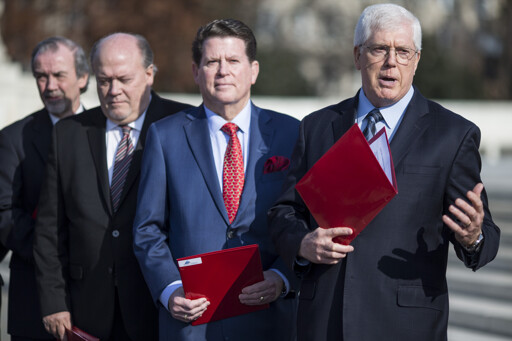Summary
Conservative lawmakers and activists are pushing to overturn Obergefell v. Hodges, the 2015 Supreme Court ruling legalizing same-sex marriage. Liberty Counsel’s Mat Staver declared, “It’s just a matter of when.”
Some legislators, like Oklahoma Senator David Bullard, are introducing bills to challenge the ruling, while Justices Thomas and Alito have signaled interest in reconsidering it.
Though most Americans support same-sex marriage, the court’s conservative shift is concerning.
The 2022 Respect for Marriage Act ensures federal recognition but does not prevent states from restricting same-sex marriage if Obergefell is overturned.



I don’t think you understood my point when it comes to statistics and significance. I wasn’t talking about how many people didn’t vote, I was talking about how the people who did vote is a monumental sample size for the entire population. So if the entire population did vote the outcome would be very similar to what the sample size predicted with their actual votes.
Still mathematically incorrect, I’m afraid.
Your point isn’t valid because “people who voted” is certainly not a random sample but it is also not an unbiased or stratified sample of the population.
It’s very plausible indeed that (for example) democratic leaning voters were jaded and stayed home whilst republicans were excited about the disruptive influence their guy mightt have.
Your sample contains no eligible voters whatsoever in the stayed-home category and it’s heinous extrapolation to assume that your proportion extends into this group with markedly different behaviour to those in your sample, especially when the percentages were so close in any case.
Using your logic, I could do a hypothesis test with a tiny sample of hundred voters and get my margin of error under a SL of 5% and claim statistical significance, because if I excluded people who voted in person or people who voted by postal vote, I would get strikingly different outcomes. Thus, if voter preference is correlated so markedly even by method of voting, it’s absurd to suggest that there’s no correlation over fact of voting.
By your logic (statistical significance irrespective of how non-random and non-stratified a sample is), no pre election poll could ever be wrong.
Statistical significance isn’t the same as truth. How representive and free from bias your sample is are two things that are critical to the validity of your conclusions.